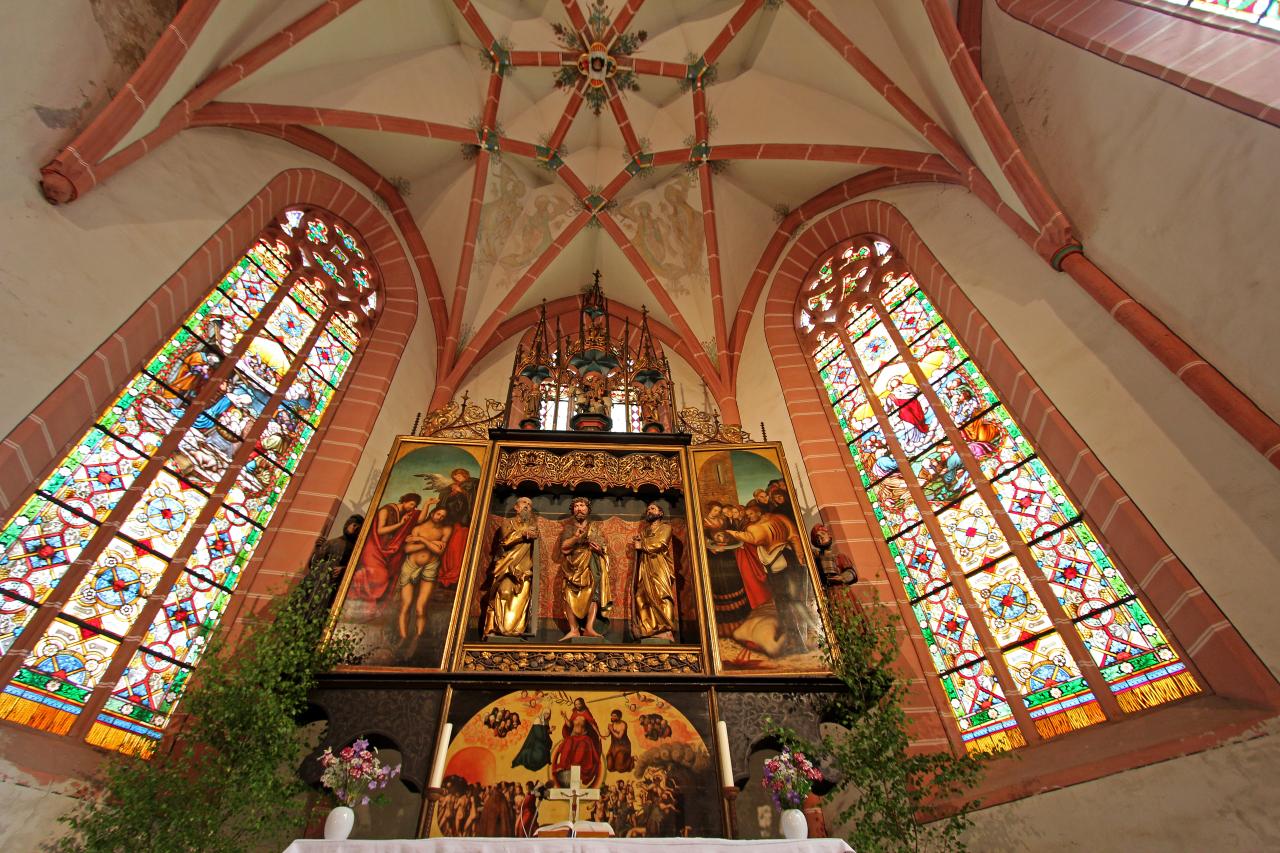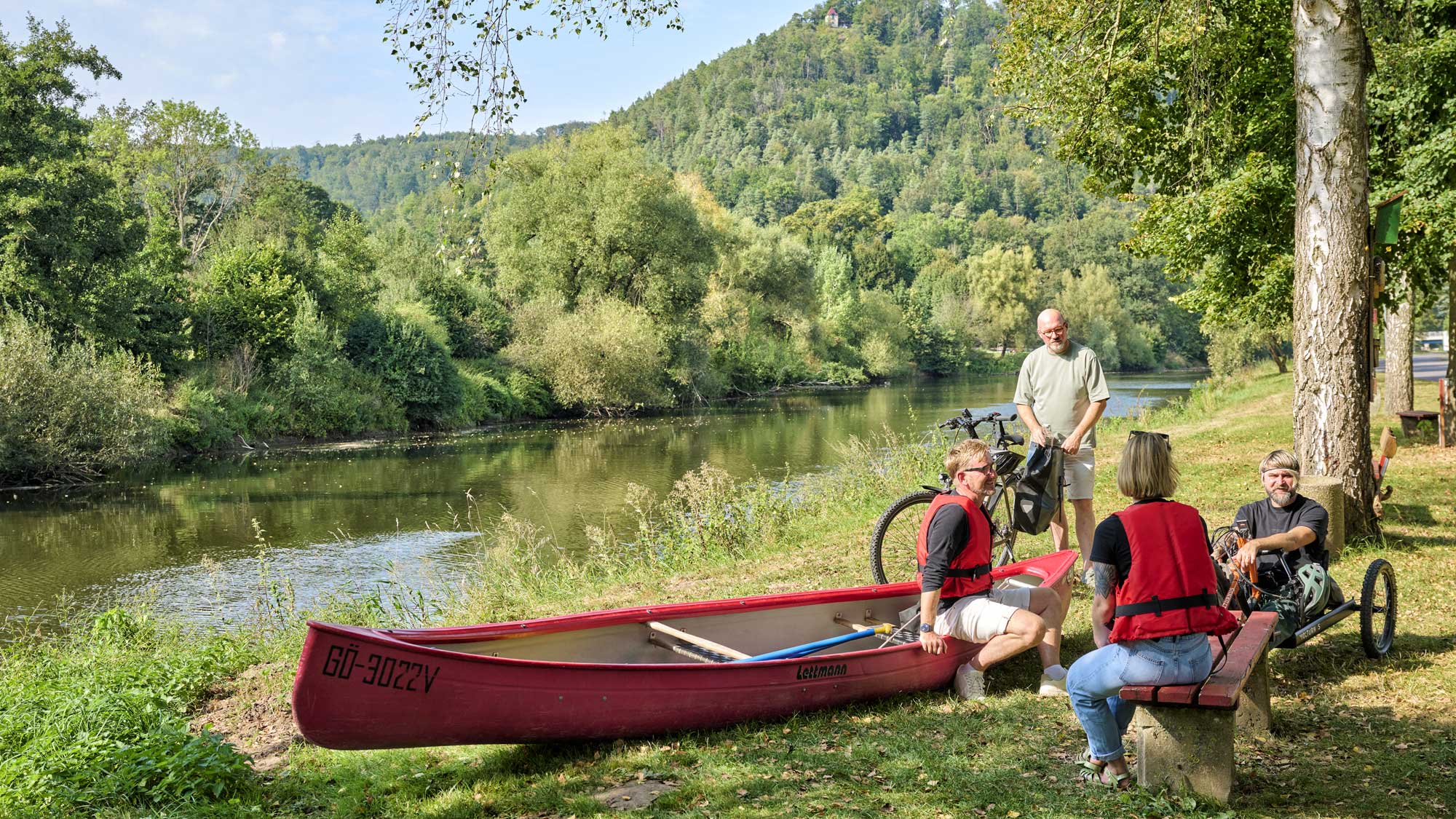You're in the right place! Whether in nature, in the middle of the city, for families, in the countryside, historic or traditional: among Thuringia's TOP hosts, everyone will find exactly the right address.
Art and passion
On the trail of Cranach in Thuringia
Who painted this? In the case of some valuable paintings, art historians are still puzzling over who the artist was. Lucas Cranach the Elder? Or maybe one of his sons? Through his workshop, Cranach had developed a label, a real brand, intended to make identifying individual employees impossible. The painter successfully committed his two sons (Hans died unexpectedly in 1537 at the age of around 24) and his employees to a uniform approach, which became the workshop’s signature style. He had little interest in employing independent artistic personalities. Everything had to run like clockwork, and as far as possible with reliable Cranach quality.
One of the reasons for this was that Cranach was a busy man: he was the court painter to the electors of Saxony in Wittenberg, and also took on private commissions. So he used every trick in the book to establish an effective painting operation. The winged snake with the ruby ring in its mouth, a coat of arms conferred by the prince, became his signature and was usually hidden somewhere in the picture. Cranach also ran a print shop and a pharmacy, which enabled him to work more cost-effectively. Not only could he reproduce his prints himself, he also most likely paid less for the materials he needed for his oil-based paints. Due to the sheer quantity of works produced by his workshop, more than 1,500 paintings survive today, along with countless prints and books.
Cranach had many connections with Thuringia: he married the daughter of the mayor of Gotha, had important patrons such as the town of Neustadt an der Orla and, not least through his friendship with Martin Luther, became the painter of the Reformation.
Cranach in Gotha
Love was what connected Cranach the Elder with Gotha. It was here that he met the mayor’s daughter, Barbara Brengebier, whom he married in 1512. The family home on the main market square is still known as Cranach’s House today.
The Ducal Museum in Gotha is home to an exceptional art collection that includes many important paintings and prints created by the family of painters.
Cranach at Wartburg Castle
Works by Cranach the Elder and the Younger, including several portraits of Martin Luther, can also be seen at Wartburg Castle in Eisenach. This is mainly thanks to a direct descendant of the artists. Captain Hans Lucas Cranach was very committed to Wartburg Castle’s art and cultural assets. With his help, numerous art guides and illustrated books were published, which also included the works of his ancestors. One of the most important paintings depicts Martin Luther’s parents.
Cranach in Erfurt
Also Erfurt is home to numerous important Cranach paintings. In the Erfurt Cathedral of St Mary, for example, you can admire one the city’s most treasured works of art, The Mystic Marriage of Saint Catherine, painted in around 1520.
A further twelve works by the family of painters are on display at the Anger Museum of Art.
Cranach in Weimar
Lucas Cranach the Elder spent the rest of his life in Weimar, having followed John Frederick I here. He lived at number 11/12 on market square, where you can still see the family’s coats of arms above the main entrance. Following the death of Cranach the Elder, his son erected the famous three-winged altar in the Church of St Peter and St Paul on Herderplatz square in 1557.
The Cranach Gallery in the City Castle in Weimar is one of the leading ducal art collections in Thuringia, and is home to works by Cranach the Elder and the Younger. The collection includes the marriage portraits of both Martin Luther and Duke John Frederick I. Currently the Weimar City Castle is closed for reforbishment and renovation work.
After his death in 1553, Lucas Cranach the Elder was buried at Jakobsfriedhof cemetery in Weimar, where you can still see his grave today.
The Cranach altar in Neustadt an der Orla
The pre-Reformation altar from 1513 is one of Lucas Cranach the Elder’s masterpieces. The precious piece arrived from Wittenberg in 1513, carefully transported on three wagons. And because of Martin Luther’s show of dedication to protecting the artwork of his friend Cranach in 1524, it has remained unchanged in St John’s Church to this day – quite unique for an altarpiece by Cranach the Elder. The altar on the platform tells the Biblical story of Judgement Day through rich sculptural and pictorial work.
Did you like this story?
Maybe, you'll like this too ...






















